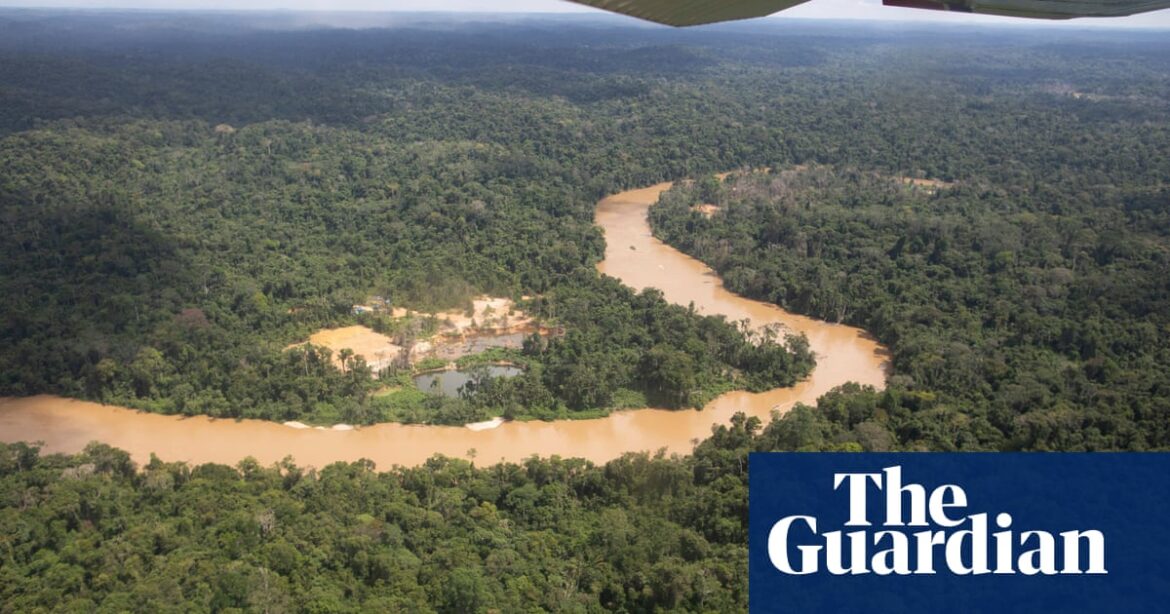
A study has revealed that by 2050, approximately half of the Amazon rainforest may reach a critical point due to factors such as water scarcity, deforestation, and climate change.
The study, which is the most thorough to date in examining the combined effects of local human activity and the global climate crisis, cautioned that the forest has already exceeded a safe limit and advised taking action to restore damaged areas and strengthen the ecosystem’s ability to withstand challenges.
Bernardo Flores, the primary researcher from the Federal University of Santa Catarina in Brazil, expressed surprise at the findings of the study. The results indicate a possible acceleration of forest decline that is earlier than anticipated.
According to him, the forest was already experiencing a decline in diversity and strength. He expressed concern that by 2050, this decline will escalate quickly. Immediate action is necessary to prevent reaching a critical point where we no longer have control over the forest’s behavior.
This requires international action because even a local halt to deforestation would not prevent collapse without a global reduction in the CO2
Pollutants that are causing disturbances in the Earth’s climate.
For 65 million years, the Amazon rainforests have endured changes in weather patterns. However, the region is currently facing new challenges due to drought, high temperatures, wildfires, and deforestation, which are reaching even the most remote parts of the biome. As a result, the forest’s natural processes are being disrupted, leading to reduced rainfall in some regions and a shift from absorbing carbon to emitting it.
There have been ongoing discussions for the past 20 years about a potential tipping point for the Amazon, with earlier models indicating it may occur when 20% to 25% of the forest is destroyed. The recent study, released in Nature on Wednesday, delved deeper into the issue by examining evidence for five factors contributing to water scarcity and determining crucial thresholds that, if exceeded, could result in the collapse of local, regional, or even the entire forest ecosystem.
By the year 2050, it is predicted that anywhere from 10% to 47% of the Amazon rainforest will be affected by multiple disturbances, potentially leading to unforeseen changes in the entire ecosystem and negative impacts on regional climate.
The research determined that in order to prevent this issue, establishing a secure boundary with a buffer zone is necessary to limit deforestation to 10% in the Amazon region and maintain global warming within 1.5C above pre-industrial levels.
Unfortunately, the damage has already been done. According to the research, 15% of the Amazon rainforest has already been deforested and an additional 17% has been negatively impacted by human actions such as logging, fires, and extraction under the canopy. Furthermore, there is a possibility that 38% of the Amazon may have been weakened due to prolonged droughts in the last ten years.
Based on current data gathered in the field, indirect markers of past patterns, and computer simulations that consider local and worldwide climate patterns, the research followed three potential paths for the ecosystem: a savanna with white sand, a diminished canopy, and a diminished forest – all of which could lead to increased instances of fire and drought.
Temperatures during the dry season in central and southern areas of the Amazon have increased by 2 degrees Celsius compared to 40 years ago. According to predictions, by 2050 there may be an additional 10 to 30 dry days and a rise in maximum temperatures of 2 to 4 degrees Celsius. The study warns that this could result in extreme heat that is difficult for the forest and local communities to bear, potentially leading to a decrease in forest growth and ability to store carbon.
The way rain falls is changing. The central and outer parts of the Amazon forest have become less wet since the 1980s. The annual rainfall in the southern part of Bolivia’s Amazon has gone down by about 20mm. However, the western and eastern regions of the Amazon are getting more rain. According to the paper, if these changes continue, it will affect the resilience of the ecosystem. Some areas may turn into savannas, while most of the Amazon will probably remain in a damaged condition.
2 emissions, and provides essential resources for millions of people
This will greatly affect the nearby and surrounding communities. The Amazon rainforest contains over 10% of the world’s land species, holds enough carbon to offset 15-20 years of global emissions, and is a vital source of livelihood for millions of individuals.2
The release of emissions is responsible for approximately half of the rainfall in the area and plays a crucial role in providing moisture throughout South America. The process of evapotranspiration from these emissions also aids in cooling and maintaining the stability of the global climate. Despite its significance, the full extent and intricacies of this phenomenon are not yet fully comprehended.
2 in the atmosphere will significantly alter
The article mentioned that current computerized climate simulations are incomplete in their depiction of how various disruptions, such as fires, droughts, and deforestation, interact with one another. They also fail to consider the varying impacts on different types of forests or the potential consequences of plans for new roads, like the BR319 which could facilitate illegal mining and land encroachment. Additionally, they do not account for the role of forest degradation in rain recycling or the potential impact of increased atmospheric CO2 levels.2
Changes in the atmosphere can either enhance or diminish the resilience of forests.
Existing models lacking complexity can lead to unexpected consequences, as evidenced by the destructive drought that occurred last year. According to Flores, the current El Niño phenomenon highlights the accelerated pace of environmental changes. To mitigate these risks, a cautious approach is necessary, including efforts towards achieving net zero emissions and deforestation as soon as possible. Acting promptly is crucial, as the loss of the Amazon would have dire consequences for humanity.
Source: theguardian.com



